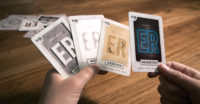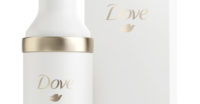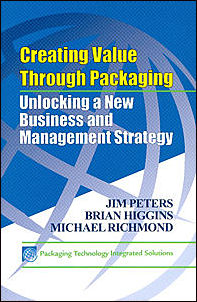True Brand Differentiation: Not New or Improved
True Brand Differentiation: Not New or Improved
by Ted Mininni
Corporate marketing and brand managers have long worked on the premise that they can continue to enjoy a competitive edge by offering “new and improved” product features. This is touted as product and brand differentiation. But is it truly?
Corporate marketing departments and package design consultancies are constantly collaborating on management initiatives that best represent the brand. Everyone is striving for that unique positioning—differentiation—in an overcrowded marketplace. Honest, down-to-earth assessments must and should be made about brand differentiation if companies are to succeed, today and into the future. Yet, too many “me too” products—and packaging—continue to appear in the marketplace, making it more and more difficult to differentiate brands. In fact, according to industry estimates, of the more than 25,000 new products that appear annually, roughly 80% of them can be categorized as “me too”. And 90% of them will disappear less than two years after being launched.
Packaging delivers
Brand identity and package design are increasingly important components of corporate branding strategies. They make a significant contribution toward the success of all category leaders in the marketplace. While marketing and advertising efforts seek to create “need” or demand for a product, only the package can tangibly deliver that product and brand to the consumer. The package must meet the consumer where he or she is, and it must deliver just the right brand message to promote a purchasing decision. The package is the last hope for reaching consumers. All of the corporate marketing, advertising and promotional efforts in the world go for naught if the consumer, standing before the retail shelf, passes over the product. When this happens, the huge cost of new product innovation, research and development, marketing and positioning the product in the marketplace has been a waste.
Since a brand’s packaging is its most enduring and accessible brand communication vehicle, it’s important that it conveys the brand experience through an innovative structure and package design system. The brand’s packaging must be a synergistic part of the overall brand expression continuum.
Corporations tinker with their product brands in amazing ways. In the food and beverage business, for example, companies allocate millions of dollars to add a new flavor, new color, improved taste or vitamins to an existing product. But what have they done to bring excitement to the whole product category? To illustrate my point: check out your local supermarket’s cereal aisles. While there are unique and noteworthy products, there is also much duplication. Interesting to note in this day and age of product proliferation, that some of the old “stand-bys” like General Mills’ Cheerios, Kellogg’s Corn Flakes and Nabisco Shredded Wheat continue to be top sellers.
New products constantly debut. Some do well. Many constitute a marginal return on investment for the manufacturers, who spend millions on R&D, manufacturing, packaging, marketing and advertising. When it is all said and done, what has been done to truly achieve overall brand differentiation? Let’s be honest here: nothing.
It shouldn’t be suggested that companies who manufacture consumables, as well as durable goods, should not build innovation into their products. That would be absurd. In today’s fast-paced retail environments, with commoditization happening at an accelerated pace, true innovation is essential. However, it should always be predicated on making real improvements that consumers are looking for and demanding. True innovative features that make products new and unique in existing categories create excitement in the marketplace. They also create excitement for package design consultancies, and push them to innovate.
Sometimes the corporate objective is to develop a logo and package design system for line extensions by leveraging existing brand equities, creating distinctive imagery in the process. At other times, the packaging project involves the positioning of a single new product or a complete product line. In that case, brand identity and image must be created from scratch. Logo design, product naming and a host of research must be done prior to all of these functions. Category audits must be done to assess the competition on the shelf. The brand assets of the new product must be uncovered and its brand drivers identified. Research into the brand experiences that impact consumer perception and decision-making must be assessed. Ultimately, consumer satisfaction is paramount.
To buy or not to buy
Wal-Mart looks at packaging critically. Its benchmark? Consumers must get the brand promise behind the package within three seconds and up to fifteen feet from the shelf! The critical decision to buy—or not to buy—is made at the shelf. Recognizable, trusted brands in visually appealing, stimulating packaging have a distinct advantage in a sea of sameness.
In the food business, for example, convenience and convenient packaging factor into the buying decision. Are the products convenient and easy to open and re-close? Are they portable? Are they easy to dispose of? Other key factors include a perception of value, nutritional merit and even fun. When packaging delivers what I call the “enjoyment assets” of a brand, the consumer forms a meaningful relationship with that brand and its products, and this leads to brand loyalty. Uncovering the enjoyment assets of a product and brand becomes the foundation for building a differentiated visual expression for that brand. This creates an essential emotional bond between consumers and brands—and that connection becomes potent and lasting. Unlocking the enjoyment assets of a brand brings favorable associations to mind at the point of sale, motivating purchase. This creates a sense of brand promise fulfillment—something fundamental in the consumer’s mind—and cements brand loyalty.
Even basic commodity products that do not ostensibly “own” enjoyment, can bring their differentiating attributes into play in packaging, and create positive interactions with consumers to create enjoyment within the brand experience. A host of research must be conducted to uncover the brand enjoyment assets of products. Some of these assets are overt, others are dormant and still others remain uncovered. Consumer-based research helps to uncover these factors. The ensuing package design solution must honestly and directly communicate solid brand values, and create that connection with the consumer.
Meaningful innovation
Safety “tamper-proof” features are important to many consumers. Today’s educated and aware consumers are demanding more and more biodegradable packaging; and more and more use of post-consumer-recycled (PCR) packaging to cut down on waste. Resealable packaging allows consumers to easily store unused food portions in their own storage containers. Standup bags and pouches are easy to open, reseal easily and are portable. Standup, zippered freezer bags are more user friendly and take up less space in storage. Pop-top cans for products like Campbell’s soup are convenient, quick and easy. Aseptic packaging for broths and soups stand out among myriad cans on the shelf, and since they are easily resealed, are convenient as well. Packaging that communicates the benefits of time-saving meal solutions is vitally important. Providing clear benefits in packaging yields significant dividends with consumers and retailers. Keeping the cost of delivering those benefits down in packaging, while creating the perception of greater benefits than the competitors’ products, scores. This all points to the future of food packaging.
Structural packaging has been getting more and more sophisticated, and beverage manufacturers have been especially eager to distinguish their products by collaborating with design firms who specialize in this arena. New, irregularly shaped bottles, or bottles with multiple curves or unusually textured surfaces, have become increasingly popular. These are attention getters on the shelf.
Take a look in the grocery store aisle that merchandises bottled water, and you will see what I mean. Poland Spring, Dasani and Aquafina are merchandised in an array of artistic, ergonomic PET bottles that are as functional as they are beautiful.
Sam Rowse, owner and president of Veryfine, commented recently on the company’s new packaging for Fruit2O fruit-infused spring water: “It has pillars designed into it, which gives it a wonderful way of refracting the light…when you turn it to drink, it gives the appearance of ice.”
Veryfine’s goal was to create a package that would be instantly recognizable to consumers, without even looking for the name on the label. Even high-end liquors are getting the structural packaging treatment. The future of structural packaging is exciting, and the possibilities endless.
Pressure-sensitive film labels on such bottles also make a strong statement. The investment in great package design will continue as food and beverage manufacturers continue to battle for market share and shelf space. The quest for more brilliant graphics and more innovative packaging will continue as vendors seek to differentiate their products and brands in an increasingly global marketplace. As manufacturers and packaging consultancies alike work toward the goal of delivering what the consumer and marketplace are demanding, they will continue to push the envelope and innovate.
A make or break proposition
By all means, companies should continue to improve and innovate their products or they risk losing category leadership. Rather than launching “new and improved” products and conducting the usual test marketing and consumer focus groups as part of their overall research, perhaps more companies should start with consumer surveys that point the way to the features and benefits that they as consumers want—in the first place. That is true research. Question: can manufacturers and consultancies working in tandem to deliver true product and packaging innovation to the consumer? Answer: they can, and they must.
True brand differentiation is about one simple, and often overlooked thing: consistently meeting, and exceeding, the basic needs and desires of the consumer. When product and packaging come together to deliver for the consumer, they create new category leaders. When companies deliver, they become true global leaders and own categories.
Increasingly, package design can make or break a product—or a brand. It either communicates true brand differentiation effectively, or it doesn’t. It either delivers the product’s merits to consumers and meets their needs, or it doesn’t. Remember: only the package can tangibly deliver that product and brand to the consumer. Given this, can’t we say that package design is one of the most crucial factors in building brand awareness and brand equity? Can’t we also say that innovations in packaging are as crucial as innovations in consumer products? BP
The author, Ted Mininni is President of Design Force Inc., a metro New York consultancy specializing in brand identity and package design for the food and beverage and toy and entertainment industries. Contact Ted at 856.810.2277, or visit www.designforce.com.
Looking for a reprint of this article?
From high-res PDFs to custom plaques, order your copy today!







